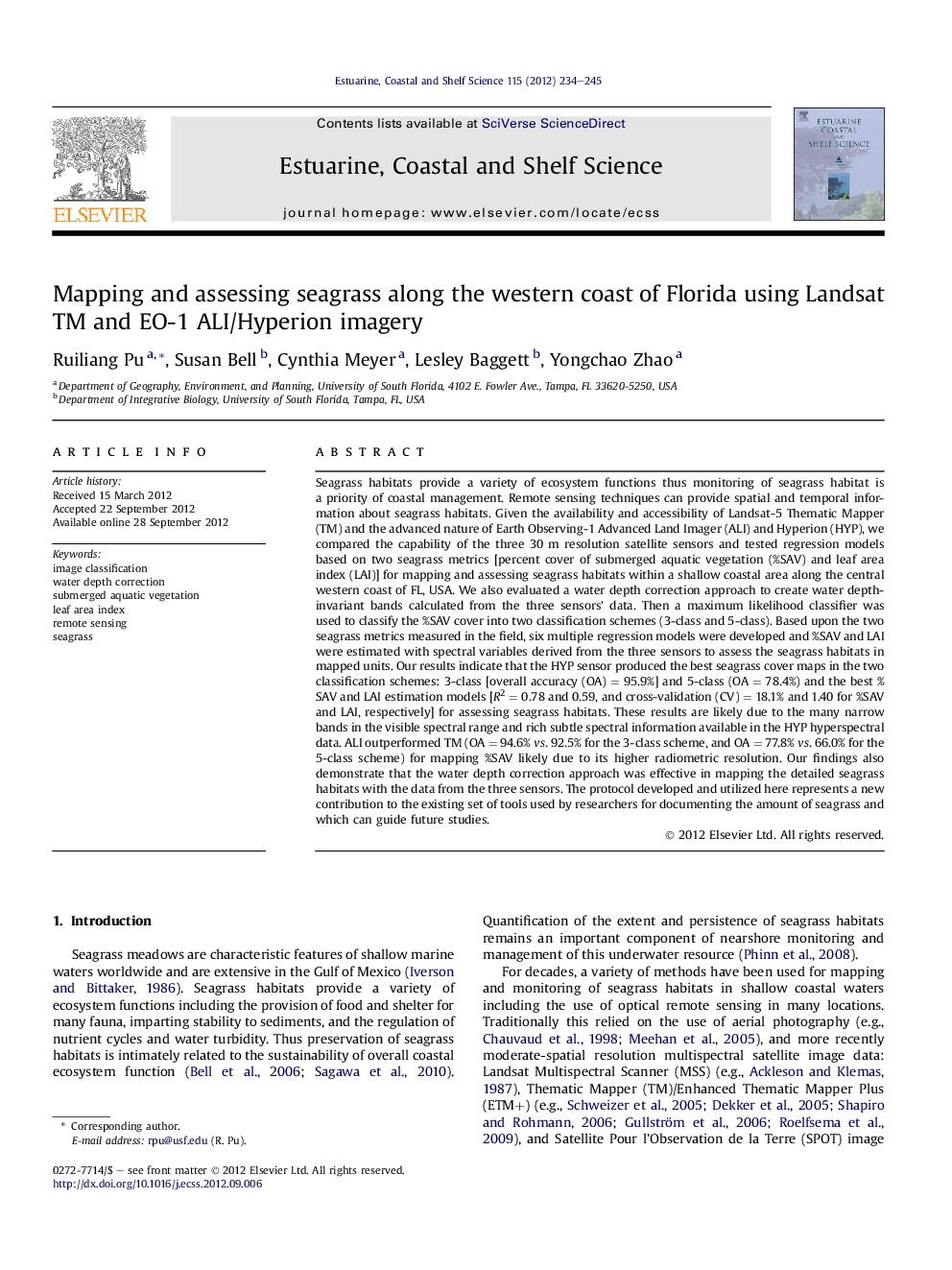| کد مقاله | کد نشریه | سال انتشار | مقاله انگلیسی | نسخه تمام متن |
|---|---|---|---|---|
| 4540150 | 1626680 | 2012 | 12 صفحه PDF | دانلود رایگان |

Seagrass habitats provide a variety of ecosystem functions thus monitoring of seagrass habitat is a priority of coastal management. Remote sensing techniques can provide spatial and temporal information about seagrass habitats. Given the availability and accessibility of Landsat-5 Thematic Mapper (TM) and the advanced nature of Earth Observing-1 Advanced Land Imager (ALI) and Hyperion (HYP), we compared the capability of the three 30 m resolution satellite sensors and tested regression models based on two seagrass metrics [percent cover of submerged aquatic vegetation (%SAV) and leaf area index (LAI)] for mapping and assessing seagrass habitats within a shallow coastal area along the central western coast of FL, USA. We also evaluated a water depth correction approach to create water depth-invariant bands calculated from the three sensors' data. Then a maximum likelihood classifier was used to classify the %SAV cover into two classification schemes (3-class and 5-class). Based upon the two seagrass metrics measured in the field, six multiple regression models were developed and %SAV and LAI were estimated with spectral variables derived from the three sensors to assess the seagrass habitats in mapped units. Our results indicate that the HYP sensor produced the best seagrass cover maps in the two classification schemes: 3-class [overall accuracy (OA) = 95.9%] and 5-class (OA = 78.4%) and the best %SAV and LAI estimation models [R2 = 0.78 and 0.59, and cross-validation (CV) = 18.1% and 1.40 for %SAV and LAI, respectively] for assessing seagrass habitats. These results are likely due to the many narrow bands in the visible spectral range and rich subtle spectral information available in the HYP hyperspectral data. ALI outperformed TM (OA = 94.6% vs. 92.5% for the 3-class scheme, and OA = 77.8% vs. 66.0% for the 5-class scheme) for mapping %SAV likely due to its higher radiometric resolution. Our findings also demonstrate that the water depth correction approach was effective in mapping the detailed seagrass habitats with the data from the three sensors. The protocol developed and utilized here represents a new contribution to the existing set of tools used by researchers for documenting the amount of seagrass and which can guide future studies.
► Water depth correction is effective in mapping seagrass habitats.
► Hyperion data improve mapping and assessing accuracies of seagrass habitats.
► % submerged aquatic vegetation (SAV) and leaf area index (LAI) are two important biological metrics.
► Spectral variables can be used to estimate %SAV cover and LAI.
Journal: Estuarine, Coastal and Shelf Science - Volume 115, 10 December 2012, Pages 234–245